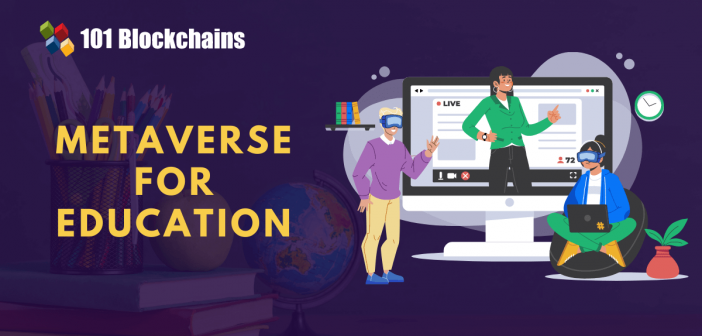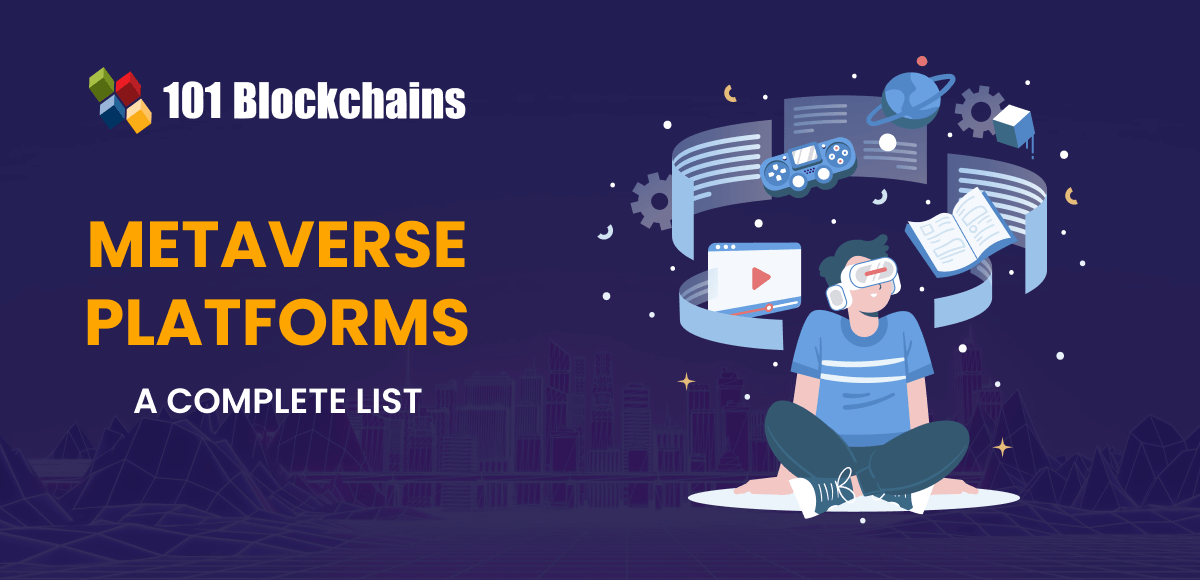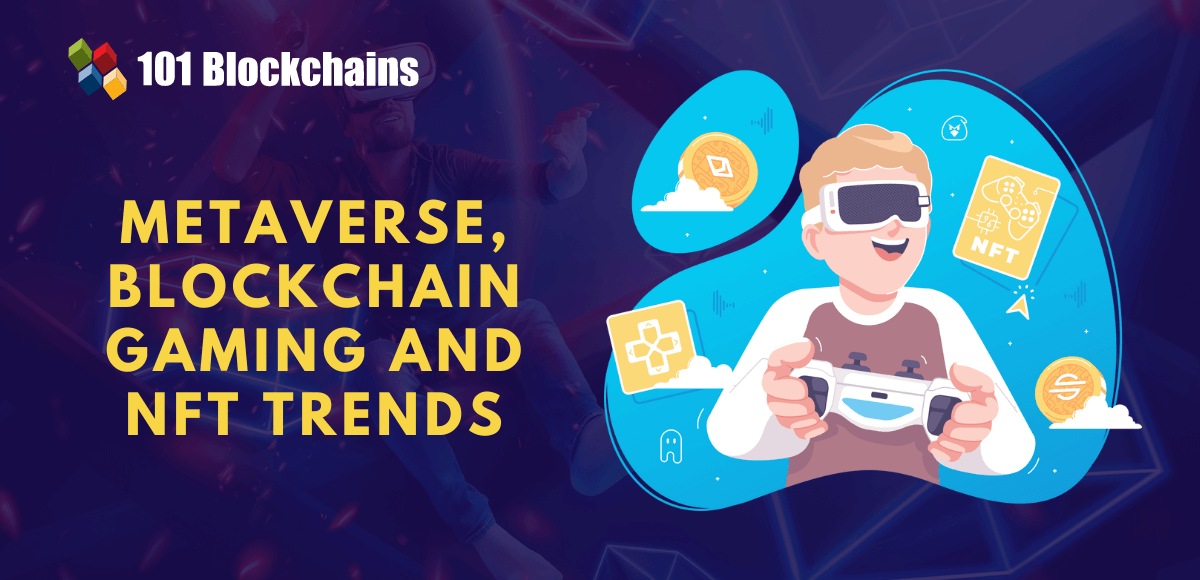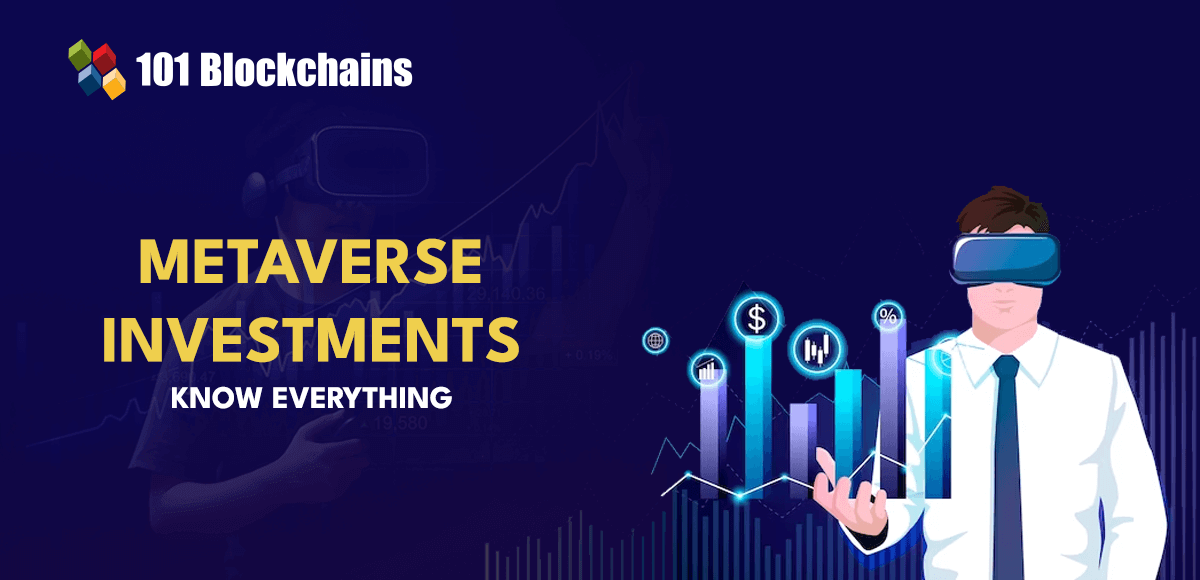Learn how blockchain truly works, master key definitions, and uncover what makes smart contracts so "smart." Dive into the fundamentals, gain valuable insights, and start your blockchain journey today!

Metaverse
James Howell
on February 10, 2022
Metaverse for Education – How will the metaverse change education?
The applications of metaverse are not only limited to the gaming sector but there is a lot metaverse can do for the education sector. Let’s find out what is the scope of the metaverse for education sector.
The term “Metaverse” has been in the news since many big companies like Facebook brought it up. In the present time, one could not help but wonder how the metaverse will shape up. You can think of the metaverse as a future form of the internet, including various shared and persistent 3D virtual spaces associated with a perceived virtual world.
However, most of the attention is on developing the metaverse rounds in the gaming sector. On the other hand, the applications of metaverse for education purposes will also gain momentum in the long run. How? Is metaverse suitable for the world of education? Can students concentrate on their studies in a world filled with digital avatars and gaming experiences?
You can find the answers to these questions by reflecting on some of the prominent use cases of metaverse in education. The following discussion gives you an overview of the promising ways in which the metaverse can change education and learning.
Is Metaverse Fit for Education Purposes?
Before diving into an outline of the educational applications of metaverse, it is important to identify the metaverse fundamentals. How will the metaverse fit with educational purposes? If you take a closer look at the definitions of the metaverse, you will find that it is basically a fully functioning digital world existing beyond the boundaries of physical reality.
Basically, the metaverse would bring together fragmented virtual worlds in a shared and persistent digital space. You can also think of the metaverse as the future collection of all virtual and augmented reality experiences alongside the interactions between virtual spaces and the real world through IoT, AI, and machine learning.
The gradually evolving applications of a metaverse in various sectors, especially gaming, have created the possibility of using a metaverse for education. However, it is important to understand the concepts of the metaverse, which can fuel educational applications before exploring the possibilities.
Want to get an in-depth understanding of metaverse concepts? Enroll now in Metaverse Fundamentals Course
Concepts of Metaverse for Education

Please include attribution to staging2.staging2.101blockchains.com with this graphic. <a href='https://staging2.staging2.101blockchains.com/blockchain-infographics/'> <img src='https://staging2.staging2.101blockchains.com/wp-content/uploads/2022/02/Concepts-of-Metaverse-for-the-Education.png' alt='Concepts of Metaverse for the Education='0' /> </a>
The critical concern for any metaverse beginner would pertain to the ways in which metaverse can change education. How will the metaverse change education? The big question brings many doubts to mind alongside emphasizing particularly the specific parts of the metaverse, which might play a role here.
A broader classification of the metaverse would bring you face to face with four important concepts such as augmented reality, lifelogging, virtual reality, and mirror worlds. All of these concepts provide a detailed impression of using metaverse technology to drive use cases in the education sector. Let us learn about these four aspects of the metaverse with a brief overview of each of them.
-
Augmented Reality
Augmented reality or AR basically involves the creation of a smart environment through utilizing location-based technology and networks. It helps in creating a digital overlay over real-world objects according to your desired specifications. Some of the important applications of AR have been evident in smartphones alongside vehicle HUDs. The most popular example of AR is Pokemon Go.
-
Lifelogging
Lifelogging is another important concept in using metaverse for education and learning use cases. It is actually the technology for capturing, storing, and sharing information and everyday experiences with people and objects. Lifelogging focuses on the use of augmented technology, and some of the practical examples of the same refer to black boxes and wearable technology. For example, Apple Watch Samsung Health are prominent real-world uses of lifelogging.
-
Mirror World
The concept of the mirror world also matters significantly for various use cases of metaverse in education. Mirror worlds are actually a specific type of simulation of the external world, which is actually an enhanced virtual counterpart of the real world. You can think of mirror worlds as the metaverse where visible traits of the real world are translated to virtual reality. Map-based services such as Google Earth are the best examples of implementing the mirror world concept.
-
Virtual Reality
Another significant aspect of the metaverse that will play a crucial role in driving educational applications of metaverse is virtual reality. It basically denotes the type of metaverse capable of simulating the inner worlds. You can think of virtual reality as a digital space developed by using digital data from interaction activities between avatars and the environment itself.
So, how do these four aspects of the metaverse influence education? The educational implications of these four aspects serve crucial implications for transforming conventional approaches to education and learning.
Want to learn Metaverse concepts quickly? Check out Now Metaverse Flashcards and Metaverse FAQs
How Will the Metaverse Change Education?
To answer the big question on your priorities for this discussion, you need to identify how the four crucial aspects of the metaverse affect education. The technological capabilities associated with each aspect of the metaverse for education can provide a clear impression of how metaverse can change education. Here is an impression of the ways in which the metaverse can empower education and learning.
-
Augmented Reality Uses in Education
AR technology can help in creating digital overlays over real-world objects for making the objects three-dimensional in nature. You can explore different use cases of metaverse in education with augmented reality by driving various educational implications. For example, AR can help in the visual examination of invisible parts and solve problems faster. AR can empower an in-depth overview of the content, thereby reducing the difficulty in observation and comprehension of text. Furthermore, interactive experiences such as writing and reading could also create different immersive, engaging experiences.
-
Lifelogging Uses in Education
Lifelogging focuses on the documentation of daily life and thoughts with productive outcomes. It can help in driving uses of metaverse for education by focusing on self-learning experiences. You can review and reflect on the daily events of an individual’s life. The metaverse can thus offer a vital tool for representing and implementing the feedback and learning from one’s life in practice. It also enables avenues for exploring different types of information from a critical perspective. Lifelogging can also help in reflecting on different learning experiences alongside improving creative reconstruction of the information.
-
Mirror World and Education
The mirror world is also another critical factor for addressing “How with the metaverse change education?” as it could provide immersive virtual learning spaces. Mirror worlds could help in overcoming the spatial limitations and physical restrictions on learning and education. For example, online video conferencing tools can serve as representative mirror worlds for conducting online real-time classes.
-
Virtual Reality in Education
You should also take the educational implications of virtual reality into consideration when seeking information on educational applications of metaverse. VR can serve milestone advancements in education by enabling virtual simulations of practical demonstrations in digital environments. For example, a risk management training session on fire control can be costly in the real world. However, a VR simulation of firefighting exercises can easily serve as a cost-effective alternative.
Want to become metaverse expert? Checkout detailed guide on How To Become Metaverse Developer
Potential Ways for Using Metaverse in Education

Please include attribution to staging2.staging2.101blockchains.com with this graphic. <a href='https://staging2.staging2.101blockchains.com/blockchain-infographics/'> <img src='https://staging2.staging2.101blockchains.com/wp-content/uploads/2022/02/Potential-Ways-for-Using-Metaverse-in-Education.png' alt='Potential Ways for Using Metaverse in Education='0' /> </a>
The final aspect in understanding how metaverse will influence education in the future would focus on the possible ways in which the metaverse would affect learning. Here are the notable applications of metaverse for education that would change the way we perceive the value of the metaverse.
-
Engaging Guides
The first and foremost answer for “How will the metaverse change education?” draws references towards the immersive experiences in the metaverse. Teachers don’t have to show an image or video or read from books anymore in the metaverse. As a matter of fact, teachers can show their students how a particular machine is created or how a process happens at the molecular level. The immersive experiences in the lessons ensure that students are more likely to remember the lessons.
-
Integrated Learning
The use of metaverse for education would also rely largely on the prospects in the metaverse for moving seamlessly between different virtual spaces. For example, you don’t have to worry about clearing your doubts about how electrons flow in our body when understanding conductivity. The metaverse can allow improved prospects for amalgamation of multiple subjects in single learning environments for holistic learning experiences.
-
Developing Values of Responsible Usage
The metaverse undoubtedly offers many formidable value propositions, especially for bringing different concepts to life. However, it comes with other important concerns associated with unauthorized usage. With the use of blockchain-based identities, students can discover new opportunities for responsible use of the metaverse in the long run.
-
Freedom to Create and Share
You don’t have to think of the use cases of metaverse in education as just the educational variants of online games. Users don’t have to fall in line with the goals of the game’s missions. On the contrary, students can create and share experiences of their own and design learning experiences that expand the freedom and flexibility in learning.
Build your identity as a certified blockchain expert with 101 Blockchains’ Blockchain Certifications designed to provide enhanced career prospects.
Bottom Line
The different elements associated with the use of metaverse for education showcase augmented reality, virtual reality, mirror worlds, and lifelogging. You can explore the different use cases of a metaverse in the gaming sector presently. On the other hand, the metaverse also has the potential to introduce new milestones for empowering learners.
For example, you can access more immersive learning experiences with the help of the metaverse. In addition, it can help in a better simulation of real-world processes, systems, and objects for empowering learning. Furthermore, the metaverse can also help students document their learning experiences and enjoy the value of critical learning. Explore the other possibilities of implementing metaverse in the educational sector over the long run.
*Disclaimer: The article should not be taken as, and is not intended to provide any investment advice. Claims made in this article do not constitute investment advice and should not be taken as such. 101 Blockchains shall not be responsible for any loss sustained by any person who relies on this article. Do your own research!






